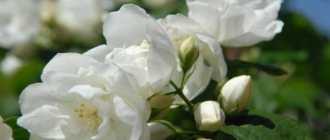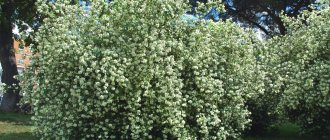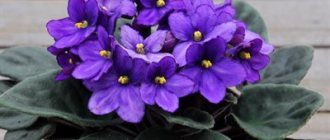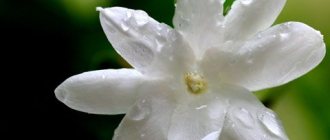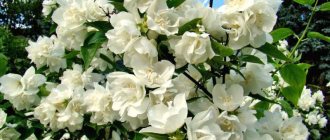Basic principles of caring for jasmine
Jasmine belongs to the category of unpretentious plants that can withstand temperature changes. There are no special requirements for lighting and soil. However, in order for the growth of the shrub to be stable, it is necessary to plant it in an area where there is no draft. You will also need to systematically moisten the soil and apply fertilizers for the jasmine so that the bushes are well-groomed and delight with lush flowering.
Note! Excessive moisture negatively affects the growth and development of the plant, so it is necessary to water the shrub often, but in moderation.
Features of the culture: why is jasmine worthy of decorating your garden?
This culture belongs to the Hydrangeaceae family. Unpretentious in care, presented in the form of spreading bushes with a predominance of white and cream flowers with a pleasant aroma. Due to its ease of care, jasmine is very popular among landscape designers. Currently, breeders have developed many varieties of garden jasmine. You can purchase jasmine seedlings to create a landscape composition in our nursery.
The ancestors of modern varieties of this crop come from the subtropics. There they are represented by evergreen climbing vines. In our latitudes, jasmine is an upright shrub with many branched shoots. The crown of the bush has the shape of a ball, the shoots have a soft core, which is used to prepare chibouks for the purpose of subsequent transplantation of the crop.
The size of the flowers of the shrub reaches 5 centimeters; it blooms for two summer months, starting in June. In autumn, both the flowers and foliage of the bush fall off, and wintering of the bush needs to be taken care of in advance.
Spring feeding of jasmine
Experienced gardeners recommend applying the first fertilizer for garden jasmine on May 10–15. To do this, you need to prepare a nutrient solution, which includes:
- superphosphate - 60 g;
- urea - 30 g;
- potassium sulfate - 30 g.
Pour 20 liters of water into a deep container and add the listed components to it. The prepared solution is used for spraying bushes in May and after the end of the flowering period.
What fertilizers are suitable for jasmine
Not every fertilizer is suitable for jasmine. It is recommended to give preference to mineral and organic preparations intended for processing this shrub. Feeding plants with a solution containing calcium promotes abundant flowering. Below you can find the most suitable types of fertilizer for jasmine.
Organic fertilizers
For the harmonious growth and development of the shrub, lush and timely flowering, it is necessary to systematically enrich the soil with useful substances. Beginner flower growers often wonder how to feed jasmine in the summer? The most useful feeding during this period will be wood ash (0.1 kg per bush) or manure diluted in rainwater (1:10).
Mineral fertilizers
Jasmine bushes need mineral supplements. It is recommended to use as a fertilizer a solution containing water and superphosphate (1:5), urea (2.5 g) and potassium sulfate (2.5 g). After thoroughly mixing the components, the solution is poured under the jasmine bushes.
Complex fertilizers
During the budding period, plants need complex fertilizers. Using a similar fertilizer for jasmine promotes the formation of healthy leaf blades. Complex fertilizers for jasmine are applied at intervals. However, it is not recommended to use them more than once every 14 days. Most often, gardeners prefer Agricola, which is diluted in settled rainwater (5 g per 2 liters).
Landing
A plant with an open root system is planted only before the leaves bloom. A seedling planted in spring with unfurled leaves may die. In autumn, plants with an open root system are planted from September 10 to October 10; the plants take root well when planted in autumn.
The soil mixture should consist of leaf soil, humus, sand (3:2:1). Drainage - crushed stone and sand in a layer of 15 cm. The distance between plants in groups is 0.5-1.5 m; in a single-row hedge, plants are planted every 0.6-0.8 m, in well-lit places. The planting depth is 50-60 cm, the root collar should be at ground level, since if it is deeper it can rot.
Fertilizing jasmine depending on the soil
Despite the fact that jasmine is not a capricious shrub, it is better to plant it on fertile loamy soil. By choosing the right place and providing the plant with proper care, you can grow healthy bushes that delight you with dense foliage and bright flowers. Before planting jasmine, you need to prepare drainage consisting of crushed stone, broken bricks, gravel and sand, which is placed at the bottom of the planting hole.
What to feed jasmine after flowering depends on the type of soil in which the crop grows.
- Sandy soil. It is recommended to feed jasmine with water-soluble nitrogen fertilizers. The solution can be prepared independently at home.
- Loamy soil, easy to cultivate and allowing sufficient heat, moisture, and air to pass through. You can enrich mineral-rich soil by watering the soil with a solution made from water and manure.
- Chernozem is a rich and fertile land, but it also requires the application of fertilizers, which contain potassium, phosphorus, peat and sand.
Preparing for winter
Jasmine, however, like seedlings of ornamental shrubs planted in the spring, must be prepared for wintering. This procedure does not apply to adult bushes, but for newly planted bushes it is not so easy to withstand the cold. For the winter, young seedlings are covered with light material and secured with twine.
The material protects only the stem of the cutting, and to protect the root system, the soil mulching procedure is used. They dig up the ground around the seedling, fertilizing it thickly with sawdust, leaves, and pine needles.
Beautifully blooming mock orange, which is what people call jasmine, is the calling card of any garden. Fluffy and fragrant flowers in abundance beckon you to stop near them, inhale the aroma and enjoy the beauty. You can purchase different varieties of jasmine, as well as seedlings of ornamental shrubs on favorable terms in our nursery.
General rules for applying fertilizers
In order for jasmine to bloom timely and lushly, it is important not only to properly care for the bushes, but also to choose the appropriate fertilizers.
Agronomists have developed general rules for applying fertilizing, according to which the grower must:
- systematically fertilize the soil;
- introduce and alternate different types of fertilizers (organic, mineral and complex);
- select fertilizers, taking into account the type of soil and plant variety;
- take into account the timing and norms of applying a specific solution;
- distribute useful elements evenly over the entire surface;
- Follow manufacturers' recommendations for the dosage of a particular drug.
Diseases and pests of mock orange
To grow beautiful garden jasmine, as in the photo, it is important to monitor not only planting and care, but also periodically carry out treatments against diseases. The plant has good immunity, but if watered excessively it can suffer from rot and other fungal infections. To combat them, 1-2 treatments with a fungicide are carried out:
- Bordeaux mixture;
- "Topaz";
- "Abiga Peak";
- "Profit";
- "Maksim";
- "Ordan" and others.
If there is an invasion of aphids, beetles or other pests, garden bushes are treated with insecticides:
- "Biotlin";
- "Fitoverm";
- "Karate";
- "Fufanon";
- "Aktara".
Timing for applying fertilizer for jasmine
Regular application of fertilizers allows you to achieve lush and long-lasting flowering. At the end of spring, manure diluted with water in a ratio of 1:10 should be added to each jasmine bush.
Gardeners are often interested in how to fertilize jasmine in the summer so that it blooms profusely? In June, you need to apply mineral fertilizers to the soil, which contain:
- urea - 30 g;
- potassium sulfate - 30 g;
- superphosphate - 45 g;
- water - 15 ml.
Advice! In summer, jasmine is fertilized in the morning or evening.
As soon as the flowering period is over, it is recommended to add 150 g of wood ash to the tree trunk, this will promote good bud formation for the next year.
Scheme for spring feeding of jasmine
How to feed jasmine in the spring to create a supply of nutrients? Experts recommend using:
- infusion, for the preparation of which manure is mixed with water (1:10);
- mineral fertilizers, which are applied to the soil at the end of May.
To prepare mineral fertilizer, you need to combine 4 liters of water, 6 g of potassium sulfide, 8 g of superphosphate and 6 g of urea in a deep container. The components are mixed. The prepared solution can be poured over 2 jasmine bushes. It is advisable to apply mineral fertilizing before the start of the active growing season.
Note! During flowering, the crop should be watered abundantly and the soil should be systematically treated with wood ash.
Mistakes gardeners make when applying fertilizers
Beginner gardeners often make mistakes when feeding jasmine bushes. The most common mistakes include:
- incorrectly calculated dosage. It is important to strictly follow the manufacturer’s recommendations when preparing the solution;
- violation of feeding deadlines. Above we indicated the preferred timing for applying fertilizers;
- use of drugs after the expiration date. The elements that make up fertilizers lose their beneficial properties over time, so feeding jasmine with expired fertilizer will be pointless;
- uneven distribution of the drug over the area. It is important to fertilize correctly to avoid a deficiency or excess of substances in a particular area of the soil.
Jasmine is an amazing shrub that delights with abundant and long-lasting flowering. This plant can become the highlight of a garden plot. But so that the crop does not lose its attractive appearance, it is worth feeding the bush correctly and developing your own schedule for fertilizing mock orange.
What to plant next to mock orange
You can plant other garden plants next to jasmine.
Shrubs and tall flowers go especially well with it:
- Hydrangea.
- Lilac.
- Spirea.
- Weigel.
Jasmine looks good in single plantings and compositions.
The skeletal branches of mock orange are often exposed, so hostas can be placed next to it. Caring for them is also quite simple, especially since they prefer partial shade, which the bush will create.
Important! In close proximity to garden mock orange, you should not plant roses, gladioli and other demanding crops.
Jasmine actively takes up space and absorbs a lot of moisture and nutrients from the soil.
